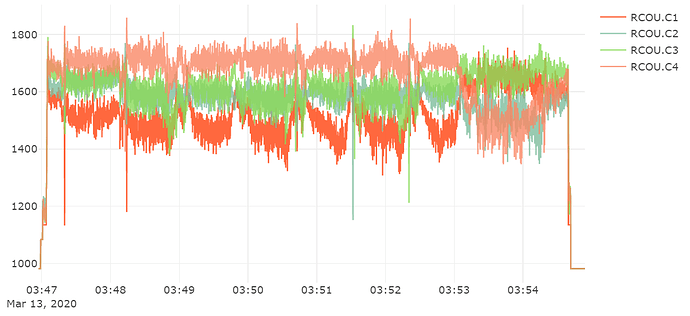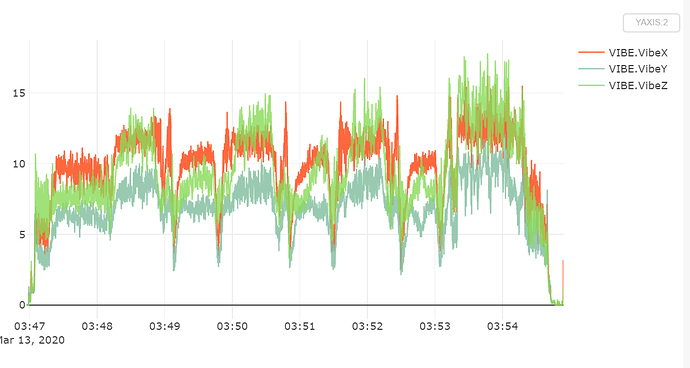It’s just a warning in MissionPlanner, in the full parameters you can set any value required.
Hi Shawn…
The spread sheet works great for someone like me with limited experience- thanks again as I successfully flew a new copter today with full confidence in your settings… to you have any suggestions on PIDs to begin with prior to running autotune… based off props, battery weight etc
Thanks again
Shawn
Your BATT _ keys do not exist in AC4.0.3
I get a message saying they done exist. I well looking for them, and they are not there
Not a big deal just figured I would let you know.
Thanks Dave
I can see them OK in AC 4.0.3 and AC 4.0.2 on actual craft, and I see them in the doco Complete Parameter List for both AC 4.0.x and AC 3.6.x versions. https://ardupilot.org/copter/docs/parameters.html
It must be that you haven’t selected a BATT_MONITOR current and voltage sensor type and rebooted.
All the additional BATT2, BATT3 settings have nothing under them either until you select a BATT2_MONITOR value (and so on down the list).
I’m going to suggest to everyone to leave INS_GYRO_FILTER at default 20 instead of using the calculated value in the spreadsheet - UNLESS you’ve got a small frame, say 12inches or smaller, and in that case you will need the calculated higher value INS_GYRO_FILTER along with manual tuning and higher PIDs.
I’m not suggesting this is ideal for every combination - the idea is to create a fairly stable starting point where people can get their multirotors in the air and move on to Autotune.
I’ve updated the spreadsheet with this caveat - please download a new copy if you need to.
The spreadsheet works well in LibreOffice if you don’t have the Microsoft products.
Hi Shawn, I hope I am not putting too much burden on you by asking if you can explain why?
Thanks
Gal
It’s actually hard for me to explain properly - I’ve come to this conclusion through my own testing. Leonard Hall is the man with all the maths and science to explain it properly. I believe that what he’s saying (when I asked) is that the higher INS_GYRO_FILTER values as calculated by the spreadsheet and in Leonards graphs should be better for “performance” but will need additional testing and tuning on each individual craft. This can be where difficulties come in - deciding what PIDs to use in conjunction with the INS_GYRO_FILTER value. Values higher than 20 definitely suit smaller frames, and where that cutoff in frame size is - well it’s going to depend…
Therefore I’ve recommended to leave it as 20 in most cases because we’re interested in the basic stability and first flights at this level of tuning. Once your craft is going well it’s up to you to comb over all the parameters definitions and sift through log files to decide on what things to tweak for those extra tight turns or fraction less current used.
Shawn, thank you for taking the time to answer, much appreciated
Gal
I would say there is a cutoff around about the 5" size. It’s not possible to get anything smaller than that off the ground without raising the gyro filters. So you need to say something otherwise you are exchanging one set of unflyable copters for a different set 
hi shawn, could i ask some help on my quadcopter setup for better tuning, i have these combination:
Frame: Tarot XS690, F/C: Pixhawk 2 with Here GPS, Prop 15.5 x 5, Motor: KV380 and Battery with Custom Li-ion 6S 4P 14A, thanks if you can find time to help me…
I have basically that exact combination and frame. I can upload my parameters later on this evening so you can use those as a reference
hi dave thanks for the reference…, i have some problem also my quadcopter suddenly lost GPS and Failsafe EKF Variance appear while doing the autotune… can you guess whats the cause of this problem i can send you my TLog
Bin files are needed not tlog
okay dave i will send to you the bin file on the next day
Yeh, the goal is to get people into the air and flying.They can always move from a reliable tune to a performance tune that requires more care during tuning.
The trick is to come up with a set of parameters that gets people going as reliably as possible.
hi dave i will give you a sample bin file of my setup this is in auto mission can you check if there is need for changes in tuning?
my setup will fly but i am interested in improving it but my problem is how to do it… thanks for your help
you can notice that compass has failed in autoanalyis due to mag inter how can i fix this one… by the way my GPS was placed on top of the Tarot Cover.



